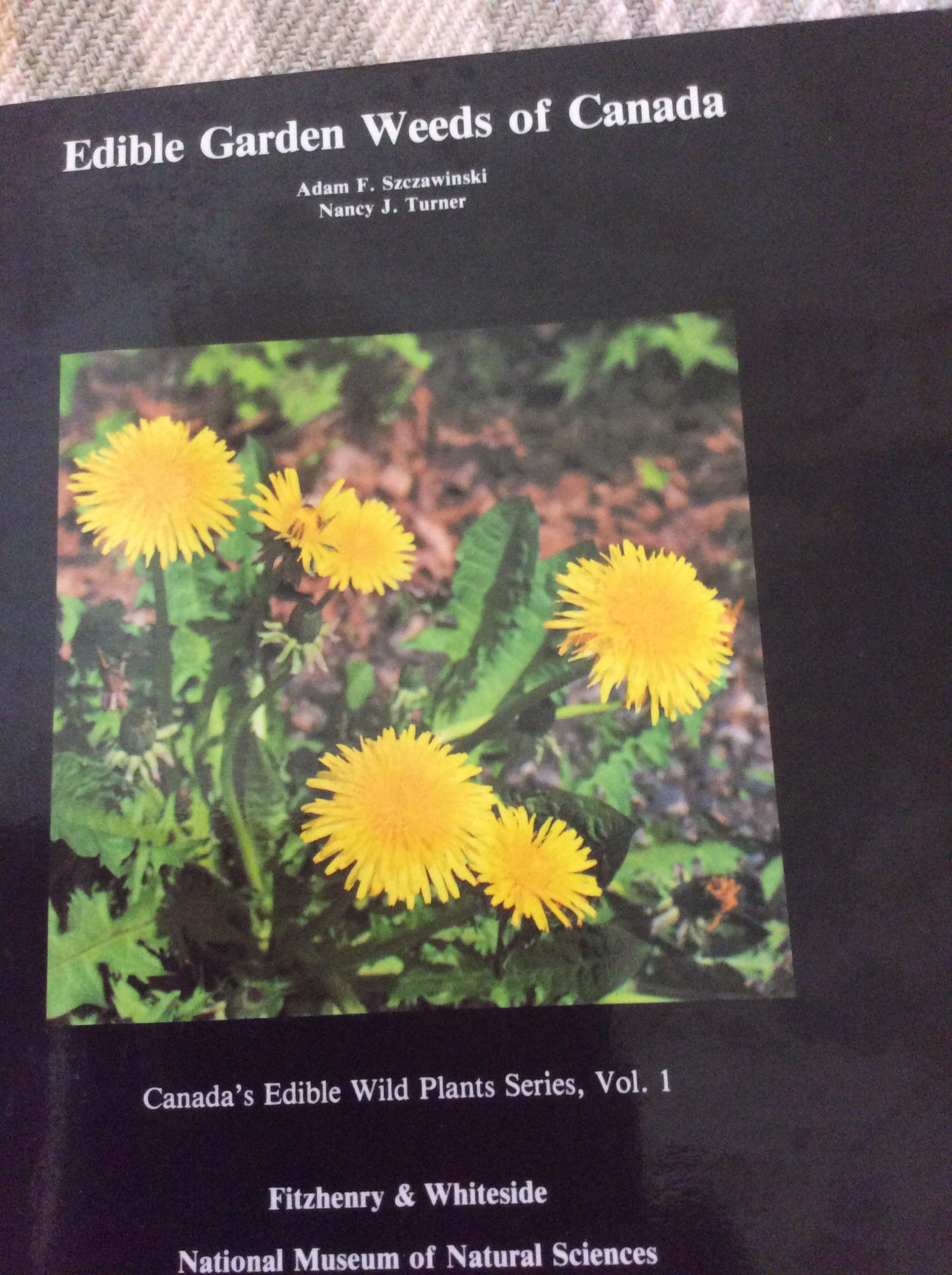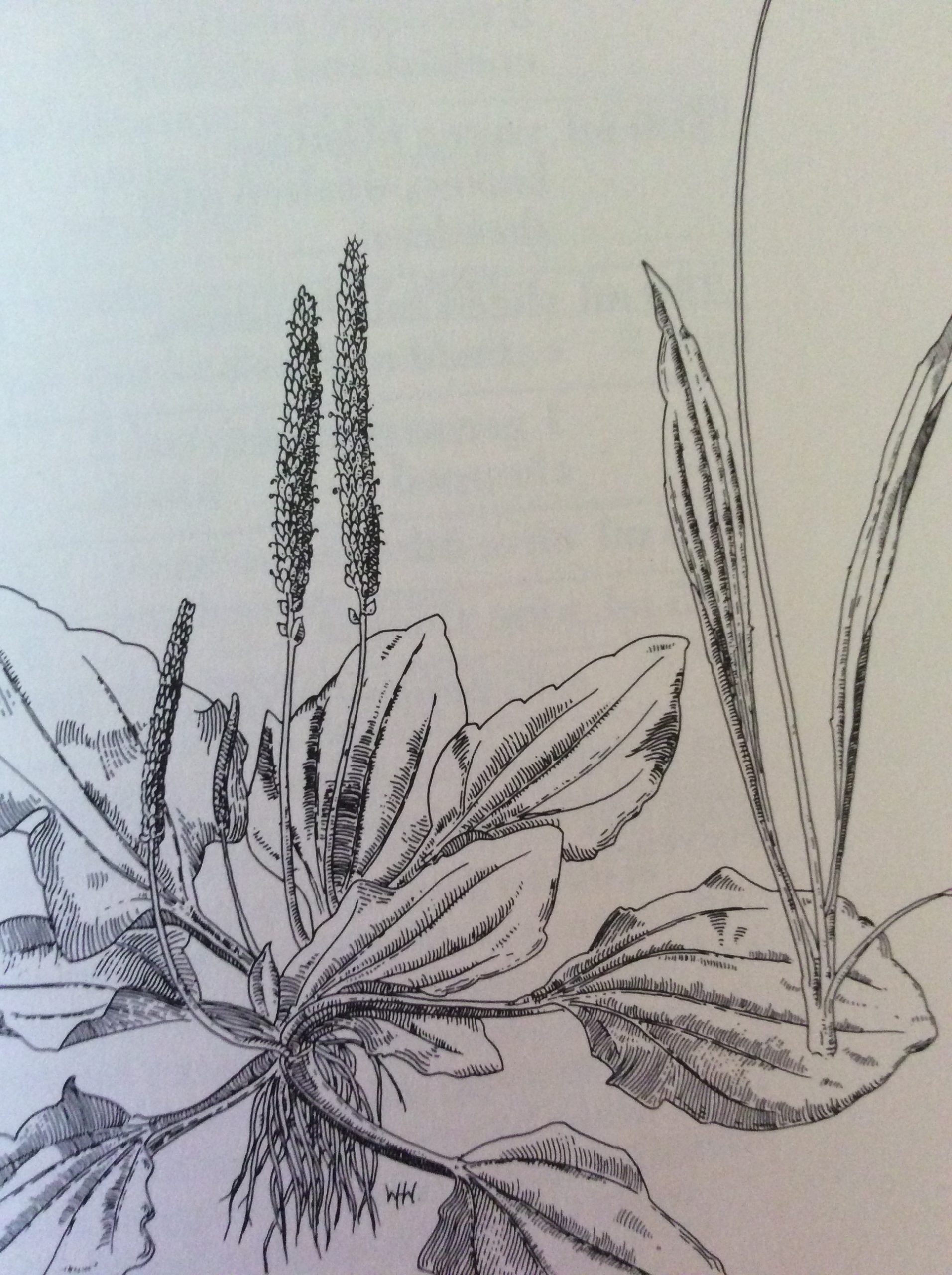Edible Garden Weeds of Canada, Szczawinski, Adam F., Turner, Nancy, 1988
This book will acquaint you with the edible qualities of plants that you
encounter every day. It will introduce you to foods that are delicious, rich in
vitamins and minerals, and yours for the picking. The book is 168 pages of
information.
Over 40 species of weedy plants are described in this book. Beautiful sketches
of the plants are on each page along with the common names and at the
bottom of each page the corresponding scientific one, and of course great
recipes. The book also explains how to recognize, where to find and how to use the weed.
For those gardeners, many of the weeds that are laboriously pulled up and
relegated to the compost can be used instead to supplement the vegetables
that they compete with.
An example of the pen and ink scetches in the book. In this instance it is of plaintain.
We need to take a look at our conservative eating habits, our less-than-ideal
nutrition, and the amount of money we spend on food. We should be able to
do better in all three areas. Weeds can help if only you let them.
In general, man does not like his weedy companions. They invade his gardens
and fields and choke out his crops, competing for sunlight, water, and nutrients.
It is estimated that a minimum of $200 million is lost annually as a direct result
of weed damage and efforts to control weeds.
Fortunately, for all their disadvantages, weeds to have some redeeming
features. Some, such as ox-eye daisy, milkweed, evening primrose, and even
the dandelion, are extremely attractive and can brighten up any landscape.
Other weeds are valuable soil stabilizers in waste places and on agricultural
lands, and can prevent erosion on road and railway embankments.
Gathering weeds for food can be valuable nutritionally and financially.
Furthermore, in a time of emergency, weeds could actually make the difference
between starvation and survival.
Compare the nutritional values of weeds to vegetables such as cabbage,
celery, lettuce, onions, peppers, and spinach. The results? The weeds equalled,
or many cases, surpassed the vegetables in protein content, total
carbohydrates, fibre, mineral content, and namely vitamin A and C. There is a
tremendous richness in the nutritional value of our many weeds. It seems
incredible that they are so thoroughly ignored in an increasingly nutrition-
conscious society.
Dr. Turner fondly recalls a conversation with the late Adam Szczawinske. When asked to name the one plant he would want to have with him if he were
stranded on an island, Adam’s response was dandelion – for its versatility.
A recipe for:
Cosmopolitan Weed Stew
1 cup of purslane leaves
1 cup of salsify roots (peeled just before cooking)
1 cup of lamb’s quarters seeds
1 cup of chickweed leaves
1 cup of chicory greens
1 cup of watercress
1 cup of comfrey leaves
¼ cup of wood-sorrel leaves
2 bay leaves
1 tsp. thyme
1 tsp. tarragon
1 onion diced
1/3 cup of olive oil
1 tbsp parsley
Salt and pepper to tase.
Wash greens and place all ingredients in a heavy saucepan with enough water
to cover. Bring to a boil and reduce heat to simmer, stirring frequently until
vegetables are soft (about 20 minutes). Cover and allow to stand a few minutes
before serving. Remove bay leaf. Serve with crusty whole wheat rolls. Serves 4-
6 people.
authored by Christa Bisanz


